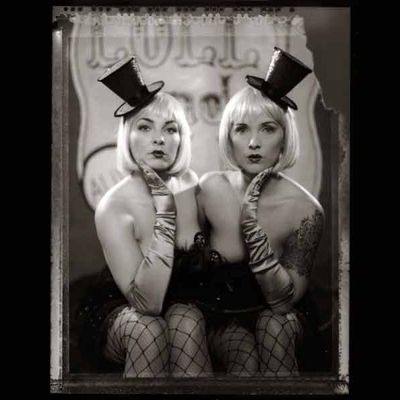
In the mid-1950s, Ansel Adams was perhaps the most famous photographer alive, and he had a request. For the past several years, heÔÇÖd been a consultant to the Polaroid Corporation, testing and analyzing the companyÔÇÖs new film and cameras. He loved instant film: If you were up in the mountains or out in the desert, how else would you know if you got your shot? HeÔÇÖd taken his consulting job seriously, too, shooting pictures all over the world and sending the results back to PolaroidÔÇÖs headquarters in Cambridge, Massachusetts, with technical notes scribbled all over their white borders.
Like nearly all photographers, though, Adams used conventional black-and-white film, not Polaroid, for his major work. So his request was simple: How about an instant film that also produced a real, high-quality, reuseable negative? He asked the question of Edwin Land, PolaroidÔÇÖs founder and creative force, and in 1961, he got his wish, under the bare-bones name of Type 55. It was a four-by-five-inch packet of film that fit in any view camera ÔÇö the big old-fashioned wooden kind Adams used, with the cloth that flipped over the back of the photographerÔÇÖs head ÔÇö and it could be processed on the spot in 30 seconds or so. Suddenly, and for the first time, you could be a serious photographer without a darkroom.
Type 55 was never a high-volume product, but Adams used it for the rest of his life, using it to make some of his greatest photos, including El Capitan, Winter, Sunrise, Yosemite National Park, California, from 1968. Literally thousands of other great photographers, from Robert Mapplethorpe to Edward Burtynsky, adopted it too. Type 55 had a true cult status. Its pictures are instantly recognizable by an odd perforated border that (as the years went on) many people began to leave on the print for its ring of authenticity, particularly as the digital age began to arrive. It looked extremely non-digital, that was for sure.
That shift, of course, was what finished off Type 55, and Polaroid film in general: Production ceased in 2009. The remaining people using it ÔÇö the holdouts, who were the most enthusiastic about this analog way of making pictures ÔÇö were, as you usually hear in these situations, devastated. (Today, a single box of film from the last batch ÔÇö now several years past its use-by date, and of iffy reliability ÔÇö can top $200 on eBay.) The product seemed irreproducible, and certainly nobody was going to start making it again. PolaroidÔÇÖs factory equipment had been scrapped. Never mind that film enthusiasts ÔÇö a group that is not so tiny as it might seem, and one that appears to be growing again, in a small-scale revolt against digital hegemony ÔÇö were clamoring for it.┬áWithout the manufacturing gear, the start-up costs would be hard to justify for a niche product.
Except not to Robert Crowley, an entrepreneur in Massachusetts, just a few miles from PolaroidÔÇÖs old factory. A product-development guy with a track record in the high-end-microphone business, he had closely followed the small-scale success of the Impossible Product, a company that had picked up production of PolaroidÔÇÖs more familiar consumer films but wasnÔÇÖt working on the professional stuff. In 2010, Crowley started tinkering with the components of old Type 55, and began to believe that a similar and in fact improved version could be produced on a small scale, even without the old machinery.
CrowleyÔÇÖs New55 Project has been through a few stop-start periods (investors in and out, supplies located then discontinued) but has gained momentum, and last month, he took it to the people. In place of Ansel AdamsÔÇÖs direct appeal to Edwin Land, Crowley went wide, to the users of old Type 55 via Kickstarter. We are being realistic, he said firmly. We need $400,000 to get this show on the road, and thatÔÇÖs not all preorders: YouÔÇÖll essentially be donating money for us to tool up the factory, in exchange for a bit of film from the first run. And ÔÇö perhaps shocking, perhaps not ÔÇö the Kickstarter campaign is within striking distance of its goal. ItÔÇÖs in its final week, and yesterday zoomed past the $300,000 mark.

Is small-batch analog film a real and growing thing? It could be. If vacuum tubes and turntables each have their obsessive followings, and Eastman Kodak is reporting that film sales have bottomed out and perhaps turned up slightly, the market may have settled at a small specialized size that can be self-sustaining. Film will have become an art supply rather than a mass medium, and the manufacturers will be like those who make sable brushes or oboe reeds: specialty craft producers, aimed at a small but stable and profitable niche. Chris AndersonÔÇÖs ÔÇ£long tail,ÔÇØ describing the lingering success of things like books and music, may turn out to apply not only to the contents of media but to the actual media themselves. The process of making them will be anything but instant, but they definitely deliver gratification.


